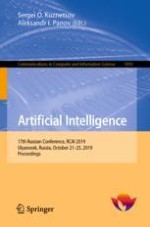2019 | Book
Artificial Intelligence
17th Russian Conference, RCAI 2019, Ulyanovsk, Russia, October 21–25, 2019, Proceedings
Editors: Prof. Sergei O. Kuznetsov, Aleksandr I. Panov
Publisher: Springer International Publishing
Book Series : Communications in Computer and Information Science
